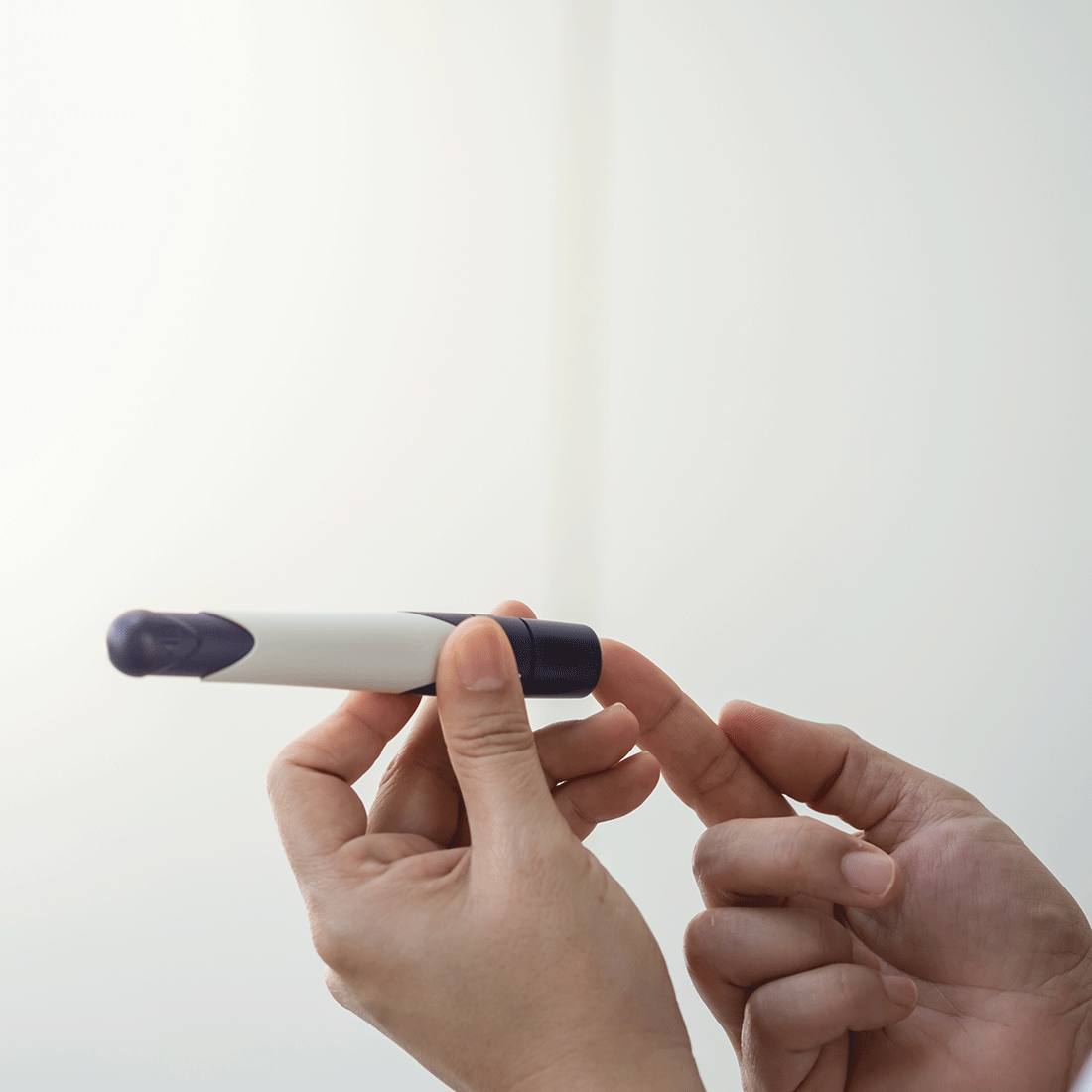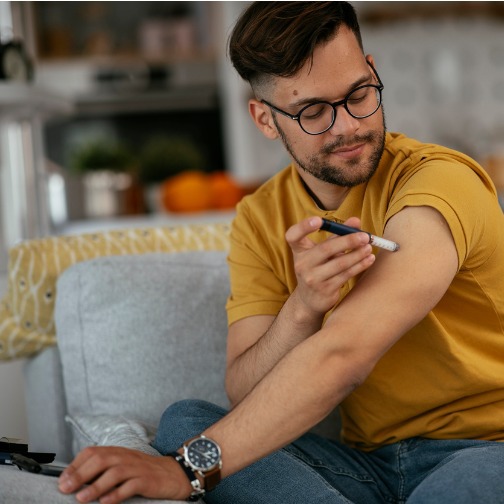What is Type 2 Diabetes?
Type 2 diabetes (T2D) occurs when the body cannot properly use insulin, a hormone that regulates blood sugar. This is also known as insulin resistance. When we eat, our bodies break down complex carbohydrates into glucose, the fuel we need. The pancreas releases insulin that acts as a kind of key to unlock the cells, allowing glucose to enter and be absorbed. In type 2, the pancreas initially produces extra insulin, but eventually cannot keep up with production in order to keep blood sugar levels in check. Without insulin, sugar stays in the blood and can cause serious damage to the entire body.
Risk factors for developing type 2 diabetes
Type 2 diabetes is a complex disease, and the diagnosis of T2D is never the person’s fault. Though there isn’t a single cause for this form of diabetes, there are various risk factors associated with it:
- History of prediabetes or gestational diabetes
- History of PCOS (polycystic ovary syndrome)
- Age—The risk of type 2 diabetes increases as you age
- Acanthosis nigricans (darkened, thick areas of the skin around the neck or armpits)
- Inactivity
- Obesity
- Socioeconomic factors (such as lack of access to healthy food, inability to exercise and lack of access to healthcare)
- Smoking
- Genetics is also a strong factor in developing type 2 diabetes. If you have an immediate family member with type 2 diabetes, you’re more likely to develop the disease
Of the 415 million diabetes cases globally, 90 percent are estimated to be type 2. There currently is no cure for it, but it can often be managed with lifestyle changes, diet, exercise, stress management and medication. Everyone’s management technique differs. To learn what’s right for you, explore our resources on our website and discuss strategies to try with your health care team. It may take some trial and error, however, we believe every person can live a healthy life with type 2 diabetes.
What’s the difference between type 1 and type 2?
Type 1 diabetes differs from type 2 in that type 1 is an auto-immune condition that occurs when the body’s own immune system attacks the insulin-producing beta cells of the pancreas. People with type 1 diabetes are insulin-dependent for life and there currently is no cure. Unless detected early, at diagnosis, people (with type 2 or type 1) have too much sugar built up in their blood and exhibit symptoms such as extreme thirst, frequent urination, blurry vision, weight gain or loss, recurrent infections and headaches.
While type 2 and type 1 differ in nature, where they often meet is in complications. Prolonged levels of high blood sugar in anyone with diabetes can lead to long-term complications ranging from heart disease, kidney failure, foot, eye and nerve damage, to skin disorders.
To learn more about type 1 diabetes, visit our sister site, Beyond Type 1.
What glucose and A1C ranges lead to a diabetes diagnosis?
A diabetes diagnosis can be confirmed in a number of ways such as determining one’s fasting plasma glucose, an oral glucose tolerance test (OGTT), an A1C test, and a random plasma glucose test.
The fasting plasma glucose test checks your blood sugar levels if you haven’t had anything to eat or drink for at least eight hours. Diabetes is diagnosed if your blood sugar is at or greater than 7.0 mmol/L126 mg/dL. A normal fasting glucose is less than 6.1 mmol/L110 mg/dL and prediabetes is considered to be from 6.1 mmol/L110 mg/dL to 6.9 mmol/L125 mg/dL.
The oral glucose tolerance test (OGTT) is conducted by checking your blood sugar levels before and two hours after consuming a sweet drink. The test determines how well your body uses carbohydrates. A diabetes diagnosis is confirmed if your blood sugar is equal to or greater than 11.1 mmol/L200 mg/dL after two hours. Normal is considered less than 7.8 mmol/L140 mg/dL and prediabetes ranges from 7.8 mmol/L140 mg/dL to 11.1 mmol/L199 mg/dL.
The random or casual plasma glucose test determines a diabetes diagnosis through testing how much glucose is in your blood at a random time. For this test, it doesn’t matter if you’ve eaten or fasted. A diabetes diagnosis is given if your blood sugar is equal to or greater than 11.1 mmol/L200 mg/dL. For further confirmation, another random test or fasting glucose test may be conducted.
The A1C is probably the metric some are most familiar with. A1c, also called glycosylated hemoglobin test, measures your average blood sugar over the previous three months. A1c levels over or equal to 6.5 percent are used to diagnose diabetes. A normal A1c is defined as less than 5.7 percent and prediabetes is defined between 5.7 percent to 6.4 percent.
Finding a forum
Looking for a place to talk to others about managing type 2 diabetes? Visit Tudiabetes, the Beyond Type 2 Instagram Page, and Beyond Type 2 on Facebook to connect with others who are living and thriving with type 2 diabetes!














